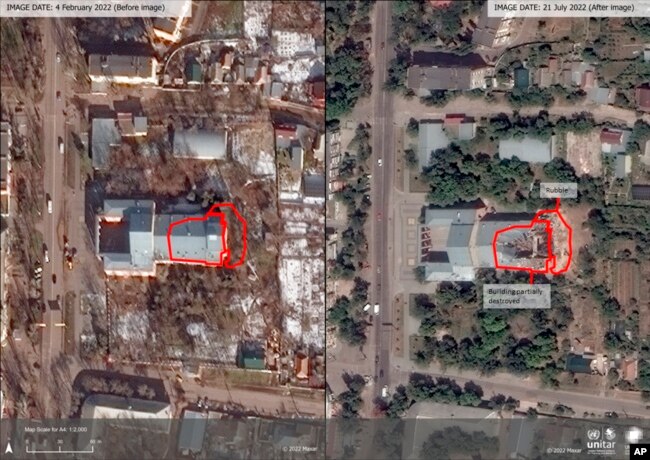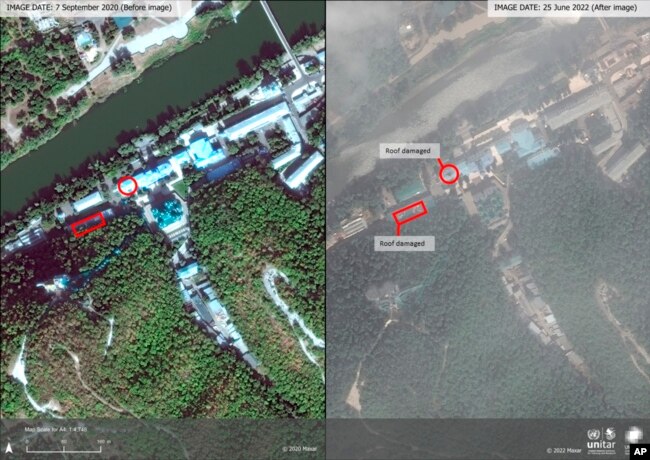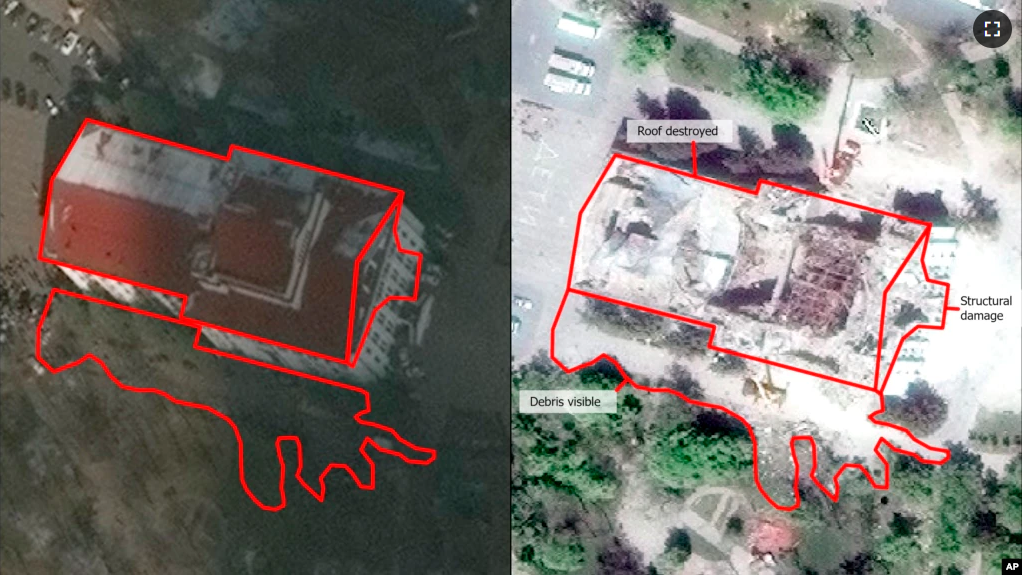The United Nations is using satellites to follow what Russia is doing to Ukraine’s historical buildings and its cultural heritage. The organization said there are more than 200 structures that have been damaged or destroyed during Russia’s invasion of Ukraine.
UNOSAT, the satellite agency, and UNESCO, the educational, scientific and cultural agency, announced the effort recently. The UN agencies are completing a database of places that have been damaged by comparing “before and after” images from satellites.
These images will be used to inform experts and the public about the destruction of Ukraine’s cultural heritage.

“It’s important for us to document the damage, but also to make sure we have the information available before the recovery,” said Krista Pikkat. She heads the culture and emergencies department at UNESCO.
Pikkat said early work began months ago. “We actually realized that, this wealth of information, we needed to put it on a platform for our experts so that we can monitor the situation.”
As of Wednesday, about 205 sites were listed. None of Ukraine’s seven UNESCO “World Heritage Sites” had been affected. The sites are a listing of some of the world’s most important cultural objects.
The process is like the one used in Syria where the country’s civil war has destroyed many historic sites, monuments and artifacts. UNESCO said it first follows Ukrainian culture ministry warnings about damage to cultural places. Then, it tries to confirm those findings using social media and other sources. If necessary, UNESCO calls on UNOSAT to try to get satellite images.

Places with confirmed damage are marked with red dots on a digital map and are included in a searchable database. Areas like Mariupol in the south, areas around the capital Kyiv, and eastern Donetsk were filled with red dots.
In time, cultural experts from UNESCO and other groups will try to visit the area to see the damage for themselves, which is not easy during a war. UNESCO experts also cannot enter areas held by Russian forces or Russian-supported separatists, such as in Mariupol.
The effort is the latest by the U.N. to understand the effects of the war on Ukrainian soil and to document the damage on lives and livelihoods.
I’m Dorothy Gundy.
Jamey Keaten reported this story for the Associated Press. Hai Do adapted it for VOA Learning English.
______________________________________________________________________
Words in This Story
heritage –n. the traditions, deeds and beliefs that are part of the history of a group of people or a nation
platform –v. a system that lets someone share information with a large number of people
monitor –v. to watch, observe or listen to someone or something for a special purpose over a period of time
artifact –n. an object made by people in the past
